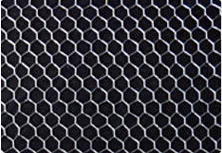The Function of Wire Gauze in Laboratory Settings
Wire gauze is an essential tool in laboratory settings, primarily used to support containers during heating processes. Its design, typically consisting of a mesh of metal wires, serves multiple functions that enhance safety and efficiency in various scientific experiments. In this article, we will explore the significance of wire gauze, its applications, and how it contributes to safe laboratory practices.
Structure and Composition
Wire gauze is made from thin metal wires that are woven tightly together, creating a flat, sturdy surface. This structure allows it to withstand significant heat while distributing it evenly across the surface area. Common materials used for wire gauze include stainless steel or other heat-resistant metals. The mesh design aids in preventing direct contact between the flame and the container, thereby reducing the risk of cracking or breaking due to thermal shock.
Primary Functions
1. Heat Distribution One of the main functions of wire gauze is to provide even heat distribution when heating glassware such as beakers or flasks on a Bunsen burner. By spreading the heat out over a larger area, wire gauze helps to prevent localized overheating, which can lead to thermal stress and potential breakage of glass vessels.
2. Support for Glassware Wire gauze acts as a stable platform for containers that need to be heated. It is typically placed on top of a stand or tripod, allowing for easy positioning above a heat source. This stability is crucial when conducting experiments that require precision and careful handling.
3. Safety Barrier In addition to its supportive role, wire gauze also serves as a safety barrier. In the event that a glass container shatters due to thermal stress, the wire mesh can help contain fragments, minimizing the risk of injury to laboratory personnel.
what is the function of wire gauze

4. Compatibility with Different Heat Sources Wire gauze is compatible with various heating methods, including open flames and electric hot plates. This versatility makes it a valuable tool in diverse laboratory settings, from chemistry to biology.
5. Use in Filtration Although not its primary function, wire gauze can also be used for preliminary filtration in certain experiments. The mesh can catch larger particles or solid debris, assisting in the preparation of solutions or mixtures.
Practical Applications
Wire gauze is widely used across different scientific disciplines. In chemistry labs, it is indispensable for heating reactions and providing uniform temperatures for various processes. In biology, researchers often use wire gauze when sterilizing media or when performing procedures that require careful heating, such as agar plates.
Moreover, educators in school laboratories frequently utilize wire gauze to demonstrate fundamental scientific principles, making it an essential instructional tool. Its simplicity and effectiveness make it a staple in educational contexts, reinforcing safe and effective laboratory practices.
Conclusion
In summary, wire gauze is more than just a piece of equipment; it is a critical component that enhances the safety and efficacy of laboratory experiments. Its ability to distribute heat evenly, provide stability, and act as a safety barrier makes it indispensable in various scientific fields. As laboratories continue to evolve, the wire gauze will likely remain a fundamental tool, reflecting the importance of maintaining safety and efficiency in scientific inquiry. By understanding the functions and applications of wire gauze, laboratory personnel can optimize their use of this versatile tool to ensure successful outcomes in their experiments.
-
The Best Metal Mesh Solutions: Expanded Aluminum Metal vs. Expanded Stainless Steel Metal
NewsSep.10,2024
-
Round Perforated Sheets vs. Hexagonal Perforated Sheets vs. Embossed Perforated Sheet Metal
NewsSep.10,2024
-
Perforated Metal Sheets
NewsSep.10,2024
-
Experience The Excellence Of Stainless Steel Grating
NewsSep.10,2024
-
Discover the Versatility Of Metal Mesh Expanded Forming Machines
NewsSep.10,2024
-
Discover The Advantages Of Steel Grating For Sale
NewsSep.10,2024
Subscribe now!
Stay up to date with the latest on Fry Steeland industry news.

